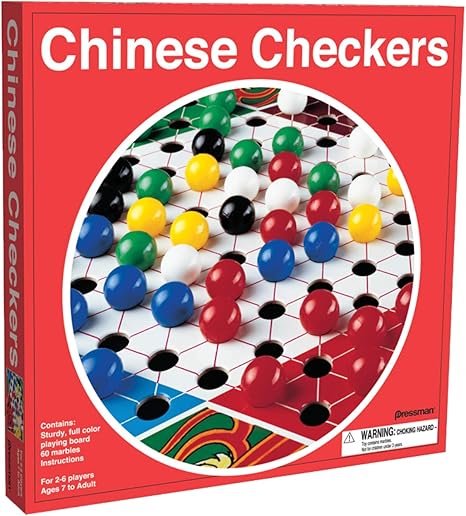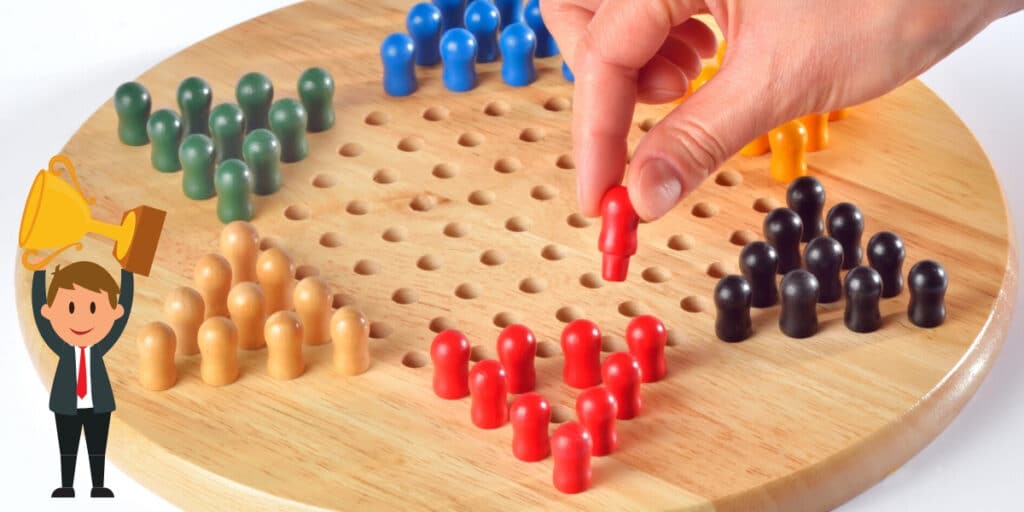

If he didn't win the program updates the active edges and passes the turn to the opponent. They choose the destination cell, and the program checks if the current player won. On every turn, the player (human or AI) get all the places where they can move the chosen piece. Public int content // The content of the vertex private Point l // The location of the vertex in the graphĪt the start, the program creates an array of all possible edges and updates the graph accordingly. In addition, the vertexes are placed in a matrix using which we get the location of the vertex on the board and print the vertex on screen. The maximum degree for each vertex is 6, the minimum degree is 2, and it is connected with an edge to each of its neighbours. The game board is represented with an undirected and unweighted graph, consisting of 121 vertexes (one for each cell on the board). The first to move all 10 of his game pieces to the opposing base.

There is no capturing in Chinese Checkers, so hopped pieces remain active and in play. A player may not combine hopping with a single-step move – a move consists of one or the other. Players take turns moving a single piece, either by moving one step in any direction to an adjacent empty space, or by jumping in one or any number of available consecutive hops over other single pieces. When two players play, like in our case, the pieces go in opposing corners of the board. Starting layoutĮach player sets his 10 pieces in one of the board corners. The game goard is made of 121 cells ordered in the shape of a six pointed star (Star of David), while the small triangles that make its corners are made of 10 cells each. To race all one's pieces into the star corner on the opposite side of the board before opponents do the same. The game was introduced to Chinese-speaking regions mostly by the Japanese. The Pressman company's game was originally called "Hop Ching Checkers". The name "Chinese Checkers" originated in the United States as a marketing scheme by Bill and Jack Pressman in 1928. The "Stern" (German for star) refers to the board's star shape (in contrast to the square board used in Halma). The game was invented in Germany in 1892 under the name "Stern-Halma" as a variation of the older American game Halma. The rules are simple, so even young children can play.įigure 1 - Chinese Checkers Board with 6 player setsĭespite its name, the game isn't a variation of checkers, nor did it originate in China or any part of Asia (whereas the game 象棋 xiangqi, or "Chinese chess", is from China). The remaining players continue the game to establish second-, third-, fourth-, fifth-, and last-place finishers.

The objective is to be first to race all of one's pieces across the hexagram-shaped board into "home"-the corner of the star opposite one's starting corner-using single-step moves or moves that jump over other pieces. The game is a modern and simplified variation of the game Halma. It does not store any personal data.Chinese Checkers Background on the game and rules Background on the gameĬhinese checkers (US and Canadian spelling) or Chinese chequers (UK spelling) is a strategy board game of German origin (named "Sternhalma") which can be played by two, three, four, or six people, playing individually or with partners. The cookie is set by the GDPR Cookie Consent plugin and is used to store whether or not user has consented to the use of cookies. The cookie is used to store the user consent for the cookies in the category "Performance". This cookie is set by GDPR Cookie Consent plugin. The cookie is used to store the user consent for the cookies in the category "Other. The cookies is used to store the user consent for the cookies in the category "Necessary". The cookie is set by GDPR cookie consent to record the user consent for the cookies in the category "Functional". The cookie is used to store the user consent for the cookies in the category "Analytics". These cookies ensure basic functionalities and security features of the website, anonymously. Necessary cookies are absolutely essential for the website to function properly.


 0 kommentar(er)
0 kommentar(er)
